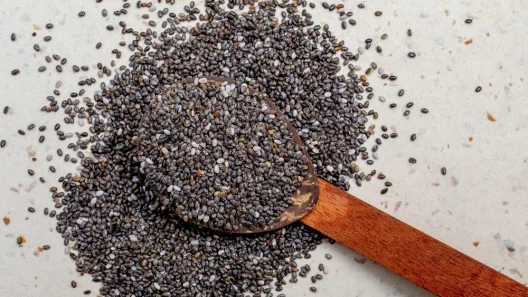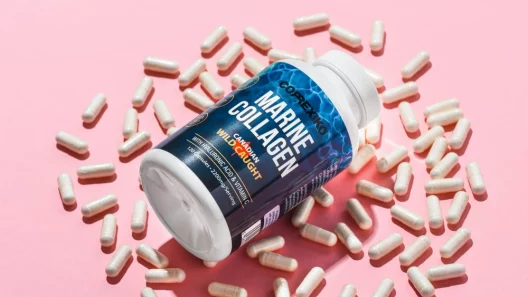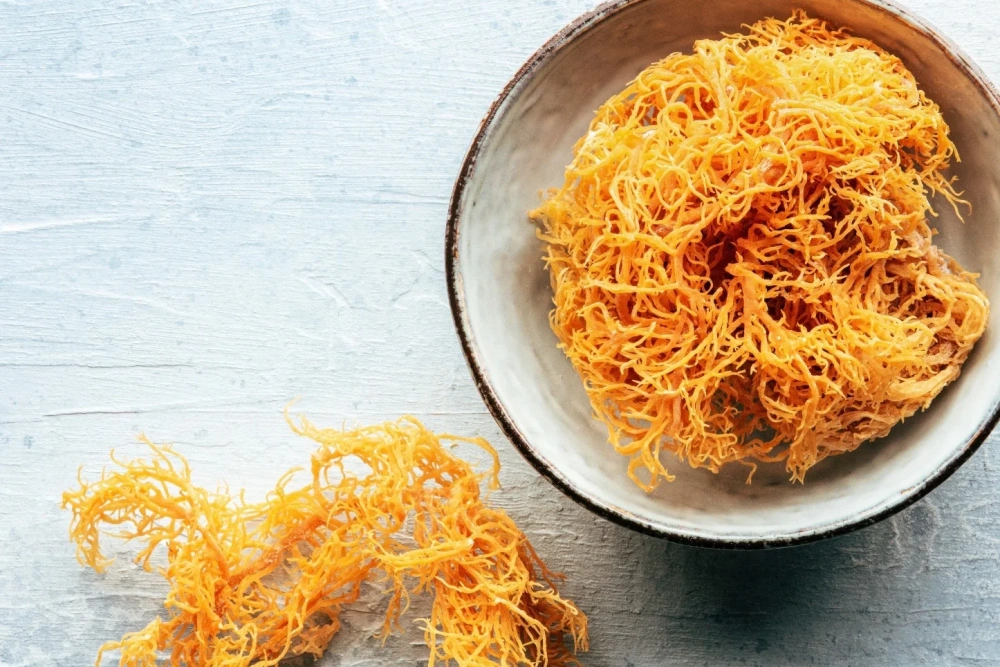Sea moss (Chondrus crispus), a type of red algae traditionally known as Irish moss, has surged from relative obscurity to become one of 2025’s most prominent wellness trends. This marine vegetable grows along the rocky Atlantic coastlines of North America, Europe, and the Caribbean Islands, where it has been harvested for centuries for both culinary and traditional medicinal purposes . The recent explosion of interest, fueled by celebrity endorsements and social media visibility, has positioned sea moss as a purported superfood with diverse health applications. However, beneath the trendy surface lies a complex nutritional profile that merits careful examination. At MyGreenRemedy, we believe in separating evidence-based benefits from marketing hype, providing you with a balanced perspective on this intriguing marine supplement. This comprehensive guide explores the science behind sea moss, its traditional uses, potential health benefits, practical applications, and important safety considerations to help you make informed decisions about incorporating it into your wellness routine.
What Is Sea Moss?
Origin and Natural Habitat
Sea moss (Chondrus crispus) is a species of red algae that thrives in the cool, rocky coastal waters of the North Atlantic Ocean, particularly along the shores of Ireland, Scotland, Canada, and the northeastern United States . Unlike many terrestrial plants, sea moss has adapted to survive in the harsh intertidal zone where it is regularly exposed to both air and seawater through tidal changes. Traditionally, coastal communities in the Caribbean, particularly Jamaica, have incorporated sea moss into their diets and folk medicine practices, often preparing it as a thick, nutritive beverage combined with milk and spices .
Traditional Uses in Folk Medicine
For centuries, sea moss has been utilized in traditional healing systems across different cultures. In Irish folk medicine, it was commonly used to soothe respiratory ailments such as coughs and bronchitis, often prepared as a warm gelatinous drink . Caribbean traditional medicine has employed sea moss as a general tonic for boosting energy and vitality, particularly during convalescence . These historical applications were largely based on observational evidence and traditional knowledge, as the scientific understanding of sea moss’s nutritional composition was limited until recent decades.
Modern Forms and Availability
The contemporary wellness market offers sea moss in various forms to suit different preferences and applications:
- Raw dried sea moss: The whole, dried algae that requires soaking and preparation before consumption
- Sea moss gel: A prepared gelatinous form made by blending soaked sea moss with water, ready to add to smoothies and recipes
- Sea moss powder: Dehydrated and ground sea moss for easy incorporation into beverages and foods
- Capsules and gummies: Encapsulated forms offering convenience and standardized dosing
- Topical products: Creams and lotions containing sea moss extract for skin applications
Nutritional Profile of Sea Moss
Vitamin and Mineral Content
Sea moss stands out for its impressive mineral density, containing a broad spectrum of essential nutrients derived from its marine environment. A 2-tablespoon (10g) serving of raw sea moss provides approximately :
- Calories: 4.9 kcal
- Protein: 0.15g
- Carbohydrates: 1.23g
- Fiber: 0.13g
- Calcium: 7.2 mg
- Iron: 0.89 mg
- Magnesium: 14.4 mg
- Zinc: 0.19 mg
Notably, sea moss is particularly rich in iodine, with concentrations ranging from 4-7 mcg per gram, making it one of the most concentrated natural sources of this essential trace mineral .
Additional Bioactive Compounds
Beyond its vitamin and mineral content, sea moss contains several unique bioactive compounds that contribute to its potential health benefits:
- Carrageenan: A sulfated polysaccharide that forms a gelatinous substance when heated with water, widely used as a natural thickener in food products
- Antioxidants: Including phenolic compounds, flavonoids, and tannins that help combat oxidative stress
- Amino acids: Including taurine, which supports muscle function and recovery
- Prebiotic fibers: Polysaccharides that resist digestion in the small intestine and serve as food for beneficial gut bacteria
The “92 Minerals” Claim: Fact or Fiction?
A common claim in wellness circles suggests that sea moss contains 92 of the 102 minerals found in the human body. While sea moss does contain a diverse array of minerals due to its ability to absorb nutrients from seawater, the specific number of 92 minerals lacks robust scientific verification . The actual mineral content varies significantly based on growing conditions, harvesting time, and processing methods.
Table: Key Nutrients in Sea Moss and Their Health Implications
| Nutrient | Amount per 10g | Primary Health Benefits | Considerations |
| Iodine | 40-70 mcg | Thyroid hormone production | Excess can disrupt thyroid function |
| Iron | 0.89 mg | Oxygen transport, energy production | Enhanced absorption with vitamin C |
| Magnesium | 14.4 mg | Muscle function, nerve signaling | Important for 300+ enzymatic reactions |
| Zinc | 0.19 mg | Immune function, wound healing | Supports testosterone production |
| Calcium | 7.2 mg | Bone health, muscle contraction | Lower bioavailability than dairy sources |
| Antioxidants | Variable | Reduce oxidative stress, anti-inflammatory | Composition varies by growing conditions |
Sea Moss Benefits Backed by Research
Thyroid Support (Iodine Content)
The iodine content in sea moss makes it particularly relevant for thyroid health. Iodine is an essential component of thyroid hormones thyroxine (T4) and triiodothyronine (T3), which regulate metabolism, growth, development, and body temperature . A deficiency in iodine can lead to hypothyroidism, goiter, and developmental issues, while excessive intake may also disrupt thyroid function . Research indicates that the iodine in sea moss is highly bioavailable, with approximately 40% becoming accessible for absorption based on dialysability assays . However, due to the potential for variability in iodine concentration, moderation in consumption is advised, especially for individuals with pre-existing thyroid conditions.
Gut Health (Prebiotic Fibers)
Sea moss contains several types of soluble fibers, particularly carrageenan and related polysaccharides, that function as prebiotics by resisting digestion in the upper gastrointestinal tract and reaching the colon intact . Here, they serve as substrates for beneficial gut bacteria, promoting the production of short-chain fatty acids (SCFAs) like acetate, propionate, and butyrate that nourish colonocytes and support gut barrier integrity . Experimental studies using human fecal inocula have demonstrated that sea moss polysaccharides can increase populations of Bacteroides, Bifidobacteria, and Lactobacillus species . Additionally, the gelatinous consistency of prepared sea moss may help soothe the digestive tract lining, though clinical evidence supporting this traditional use remains limited.
Immune Support (Antioxidants, Vitamins)
The diverse antioxidant compounds in sea moss, including phenolic acids, flavonoids, and bromophenols, contribute to its potential immune-supporting properties . These compounds help neutralize free radicals and reduce oxidative stress, which can otherwise compromise immune function. Additionally, sea moss contains vitamins A and C, both known to support immune responses . Some in vitro studies have demonstrated that sulfated polysaccharides from sea moss exhibit antiviral activity by preventing viral attachment to host cells, including against herpes simplex, influenza, and even SARS-CoV-2 in preliminary research . However, these effects have primarily been observed in laboratory settings, and human clinical trials are needed to confirm their relevance for immune support in people.
Skin Health (Hydration, Collagen Support)
Sea moss is increasingly featured in topical skincare products due to its mineral content and potential hydrating properties. The sulfur-containing amino acids in sea moss may support collagen production, while its vitamin and mineral profile provides essential cofactors for skin health . The gel form can be applied directly to the skin as a hydrating mask, with anecdotal reports suggesting improvements in skin texture and moisture retention. However, rigorous scientific studies specifically examining sea moss for dermatological applications are limited, and most evidence remains anecdotal or derived from traditional use.
Energy & Recovery (Iron, Magnesium, Endurance Claims)
The iron content in sea moss contributes to oxygen transport in the blood, potentially supporting energy production and reducing fatigue, especially in individuals with increased needs or suboptimal iron status . Additionally, the magnesium in sea moss plays a crucial role in adenosine triphosphate (ATP) production, the primary energy currency of cells . Some athletes and fitness enthusiasts use sea moss for post-exercise recovery, potentially aided by its taurine content, an amino acid that may support muscle function and recovery processes . While these mechanisms are plausible based on the nutrient composition, direct evidence from athletic performance studies is currently lacking.
Potential Anti-inflammatory Properties (Early Evidence)
Emerging research suggests that certain compounds in sea moss, particularly the sulfated polysaccharides, may exhibit anti-inflammatory properties . Experimental studies indicate that high-molecular-weight carrageenan may help reduce inflammatory signaling, while degraded forms (poligeenan) may have the opposite effect . A study in a rat model of diet-induced metabolic syndrome found that iota-carrageenan from sea moss helped reduce visceral fat accumulation and circulating inflammatory cytokines . However, the anti-inflammatory potential in humans requires further investigation through well-designed clinical trials.
How to Use Sea Moss
Different Forms and Their Applications
Sea moss is available in several forms, each with distinct preparation methods and uses:
- Sea moss gel: The most popular form for home use. To prepare, soak raw dried sea moss in water for 12-24 hours, rinse thoroughly, then blend with fresh water until smooth. Refrigerate to achieve a gelatinous consistency. Use 1-2 tablespoons daily in smoothies, soups, sauces, or beverages .
- Sea moss powder: Convenient for adding to recipes without preparation. Mix into smoothies, juices, oatmeal, or baked goods. Typically used in doses of 1-2 teaspoons daily.
- Capsules and gummies: Offer standardized dosing and convenience. Follow manufacturer instructions, typically providing 500-1000 mg daily.
- Topical applications: Sea moss gel can be applied directly to the skin as a hydrating mask or added to homemade cosmetic formulations.
Recommended Dosage and Safety Considerations
Due to the variability in nutrient content, particularly iodine, conservative dosing is recommended:
- General maintenance: 1-2 tablespoons of gel or 1-2 teaspoons of powder daily
- Therapeutic use: Up to 4 grams daily has been used in some traditional contexts, but higher doses should be approached with caution
- Duration: Consider periodic breaks (e.g., 4-6 weeks on, 1-2 weeks off) to prevent potential accumulation of heavy metals
Storage Tips
- Prepared gel: Store in an airtight container in the refrigerator for up to 2-3 weeks, or freeze for longer preservation
- Dried sea moss: Keep in a cool, dark place in an airtight container for up to 6 months
- Powder and capsules: Follow manufacturer’s expiration dates and storage recommendations
Safety & Side Effects
Iodine Content and Thyroid Considerations
The high iodine concentration in sea moss represents both a potential benefit and risk. While adequate iodine is essential for thyroid function, excessive intake can lead to thyroid dysfunction, including both hyperthyroidism and hypothyroidism in susceptible individuals . The tolerable upper intake level (UL) for iodine in adults is 1,100 mcg per day . Given that sea moss can contain 40-70 mcg of iodine per gram, consumption of just 15-20 grams could approach or exceed this limit. Individuals with pre-existing thyroid conditions should exercise particular caution and consult a healthcare provider before using sea moss products.
Heavy Metal Contamination Concerns
As a marine algae, sea moss has the capacity to accumulate heavy metals from its environment, including arsenic, mercury, lead, and cadmium . The concentration of these metals varies significantly based on growing conditions, with seaweed harvested from waters near industrial areas posing higher risks . A study scheduled for publication in the Journal of Agriculture and Food Research in June 2025 found that regular consumption of seaweed products can lead to accumulation of heavy metals associated with kidney dysfunction, neurological damage, and increased cancer risk . Choosing products from reputable sources that conduct third-party heavy metal testing can help mitigate this concern.
Special Populations and Contraindications
- Pregnancy and breastfeeding: Due to variable iodine content and heavy metal concerns, sea moss should be used with caution during pregnancy and lactation, only under medical guidance
- Thyroid conditions: Those with thyroid disorders should consult a healthcare provider before use due to iodine content
- Blood thinning medications: Sea moss may have mild anticoagulant properties and should be used cautiously with blood thinners
- Iodine sensitivity: Individuals with known sensitivity to iodine should avoid sea moss products
- Autoimmune conditions: Those with autoimmune thyroid conditions (Hashimoto’s or Graves’ disease) may be particularly sensitive to iodine fluctuations
Sea Moss Trends in 2025
Social Media Influence and Celebrity Endorsements
The recent surge in sea moss popularity has been significantly driven by social media platforms like TikTok and Instagram, where influencers and celebrities have promoted its use . High-profile figures like Kim Kardashian and Hailey Bieber have shared their use of sea moss smoothies, contributing to its status as a wellness status symbol . This social media exposure has transformed sea moss from a traditional food into a contemporary “superfood” phenomenon, with the global market valued at $2.18 billion in 2024 and projected to reach $2.60 billion by 2030 .
The Evolution of Sea Moss Products
The commercial landscape of sea moss has expanded beyond traditional dried and gel forms to include a wide array of products:
- Convenience formats: Gummies, capsules, and single-serving packets
- Functional blends: Combinations with other superfoods like turmeric, bladderwrack, and burdock root
- Beauty products: Sea moss-infused skincare items claiming hydration and anti-aging benefits
- Food applications: Continued use as a vegan thickener in commercial food products
This product diversification has made sea moss more accessible but has also introduced variability in quality and potency between products.
Looking to learn more about Superfoods? Our Ultimate Guide to Superfoods for Everyday Health has got you covered!
FAQs
Does sea moss really contain 92 minerals?
This common claim lacks robust scientific verification. While sea moss does contain a diverse array of minerals absorbed from seawater, the exact number and amounts vary significantly based on growing conditions, processing methods, and the specific type of sea moss . Laboratory analyses typically identify several dozen minerals rather than the specific number of 92.
Is Irish moss the same as sea moss?
The terms are often used interchangeably in the wellness community, but technically, Irish mossspecifically refers to Chondrus crispus harvested from the North Atlantic, while sea moss can sometimes encompass related species of red algae . The nutritional profile and carrageenan content may vary between different types, so product specificity is important for consistent results.
Can you take sea moss daily?
Daily consumption is possible but should be approached with caution due to the potential for iodine excess and heavy metal accumulation . Most experts recommend starting with small amounts (1-2 tablespoons of gel daily) and considering periodic breaks from consumption. Individuals with thyroid conditions or other health concerns should consult a healthcare provider before establishing daily use.
Is sea moss better as food or supplement form?
Each form has advantages:
- Whole food/gel form: Provides the full spectrum of nutrients and bioactive compounds; allows for culinary creativity
- Supplement form (capsules, gummies): Offers convenience and potentially more standardized dosing; may undergo more quality testing
The best form depends on individual preferences, health goals, and quality of the specific product. Regardless of form, choosing products from reputable sources that provide third-party testing results is recommended.
Conclusion
Sea moss presents a fascinating case study in how traditional foods can transition into modern wellness phenomena. Its impressive mineral density, particularly its iodine content, and diverse array of bioactive compounds offer several potential health benefits, especially for thyroid support, gut health, and immune function . However, these potential benefits must be balanced against legitimate safety concerns regarding iodine excess and heavy metal contamination .
As with many wellness trends, the truth about sea moss lies between extravagant marketing claims and outright dismissal. While not a miracle solution, when used judiciously and sourced carefully, sea moss can be a valuable addition to a balanced wellness regimen. The key is approaching it with informed moderation, recognizing both its potential benefits and limitations while prioritizing evidence-based use over social media hype.
For those interested in exploring other natural approaches to wellness, we invite you to read our articles on Best Natural Supplements for Cognitive & Brain Health and Fermented Superfoods for Gut Health: Kimchi, Yogurt & More available on our website.
Remember: This article provides educational information only and should not replace personalized medical advice. Always consult with a healthcare professional before starting any new supplement regimen, especially if you have underlying health conditions or take medications.









